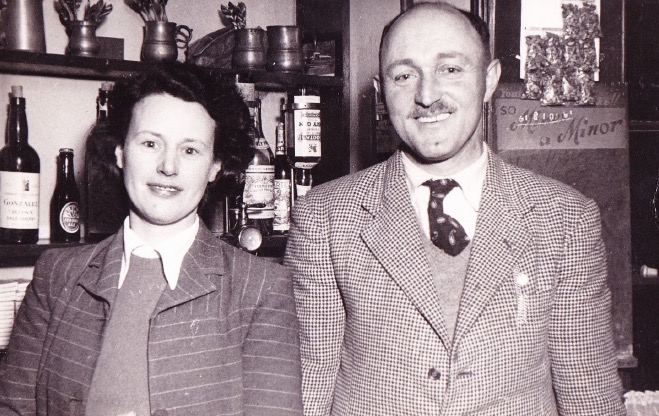| Unit or location | Role | Posted from | until |
|---|---|---|---|
| Stone Cross Outstation | Runner | Unknown | 20 Jul 1944 |
Publican & farmer
One of the runners for Mr Wadman at Priest Hawes, Stone Cross was Mr William Neil Allin of The Lamb Inn, Wartling along with others as yet unknown.
An undated interview was recorded by Wartling Local History Group with Mr William Neil Allin who was landlord of The Lamb Inn from July 1939, just after his marriage to Norah (nee Broomfield).
“I was approached by the head of this local organisation and asked if I would co-operate with them. That is how it really started. Its really difficult – I'd rather not mention any names. I don't know whether I should.
It was an Eastbourne person who approached me and they'd got a wireless station in the place where he worked upstairs and he sent out information.
Another place we went to was a big farm with a wireless set upstairs and they would have been able to transmit information. We also went to this farmhouse several times for lectures. The Army came and gave us these lectures about what we were to expect and what we were to do. When we had these meetings, there were twenty or thirty of us all turned up, but I didn't know where they came from. They must have been dotted about all over the area.
I had contacts with someone in Bodle Street and the head one at Eastbourne. There were also contacts at Stone Cross (Edwin T Wadman at Priesthawes House near Stone Cross) and Normans Bay.
The idea was we would carry on with our work as if nothing was happening and then if there was any information we could go to our next contact and inform them.
The one with the wireless station was in the Stone Cross area (there was also a contact at Bodle Street). A good excuse to get to Bodle Street was to take the horse to the Blacksmiths and then they wouldn't expect anything.
We had secret places where we could leave a message.....and this reduced the risk of exposure.
The fellow from down the coast could quite easily come in and have a pint of beer and give me the wink and the message could be left somewhere else. He was a “looker” on the coast.
All these people that I knew then are now dead. I don't want to divulge their names. There was just a single person in each place, not a group. We had no secret hiding place. Their idea was that we would carry on working as normal. That's what the Army told us, that the Germans would expect us to go on working.....
Being a Publican I had the local Home Guard always trying to get me to join in the Home Guard and they put
forward my name as a recruit; but I was sworn to secrecy and couldn't tell them what I was doing. They put my
name in several times but it was always turned down....I got rather unpopular with some of the Home Guard chaps.
One chap, a farm worker, was going to give me a hand with some corn carrying and when I asked him he said “no, I wouldn't care to come and give you a hand”. That was because I wasn't in the Home Guard but you had to be so secretive about it.
That was one of the most important things they stressed. If anything had leaked out they'd shoot you.
Wouldn't they ??”
Publication by Wartling Local History Group.
“Secret Sussex Resistance” by Stewart Angell
1939 Register
